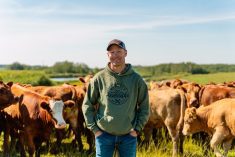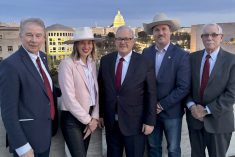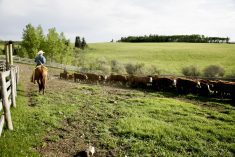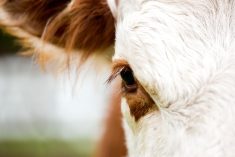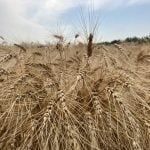Raising cattle in Canada is a part of the climate solution — and as cattle farmers and ranchers, we have known this for a long time. Being innovative and incorporating sustainable practices are at the forefront of what we do. The viability of our operations depends on it. We take tremendous pride in caring for both our land and the cattle we raise — they are our most important assets.
Talking about the weather is commonplace, whether you’re a farmer, rancher or an urban Canadian. But extreme weather events seem to be on the news more and more, from drought to floods to wildfires. Unpredictable weather is a constant in agriculture, and as producers, we work hard to steward the land and minimize the effect of changes in climate on our land, our cattle and wildlife.
The Canadian Cattle Association (CCA), through the Public and Stakeholder Engagement (PSE) Program, has undertaken initiatives to highlight the beneficial work being done in our industry to protect our rangelands and mitigate weather-related risks. Earlier this spring, PSE, in partnership with the B.C. Cattlemen’s Association, released a short documentary titled Too Close to Home, which explores the role of cattle in mitigating wildfire risk for urban communities in B.C. through targeted grazing pilot projects.
Read Also

The Canadian Cattle Association’s international advocacy efforts
Global ag policies affect Canadian food policy, so the Canadian Cattle Association participates in international and domestic forums
As the occurrence and magnitude of wildfires have grown, so too has the toll on humans and the economy, as well as our environment. For example, recent record wildfire seasons in B.C. have seen up to three times more carbon dioxide released into the atmosphere as all the province’s fossil fuel-burning sources combined and have transformed B.C. forests — once a carbon sink — into a carbon source.
While we cannot claim that cattle can prevent wildfires altogether, targeted grazing can help reduce the risk of forest fires starting and can help us control the spread by decreasing the fuel load. Grass fuels fire, but it also fuels cattle. This proactive rangeland management approach requires more time and effort by farmers and ranchers but shows the important contribution we can make to our local communities, beyond food production. Through the work we do every day and by continually improving practices on our farms and ranches, we can continue to be an important part of the climate solution. We need to keep telling these stories to consumers and policymakers.
Proactive rangeland management, fire mitigation efforts on government pastures, supporting wildlife biodiversity and a focus on enhancing soil health, has earned Doug and Erika Fossen, who own and operate Bar 7 Ranch in Rock Creek, B.C., the Environmental Stewardship Award (TESA) for 2022. This year’s award was presented in person on August 17 at the Canadian Beef Industry Conference in Penticton, B.C.
As the second and third generation on the Bar 7 Ranch, Doug, Erika — and their three daughters, Adele, Reine and Jade — take a family approach to ranching. Proper stewardship practices are at the heart of what they do.
Bar 7 Ranch includes about 2,300 acres of deeded land and holds grazing leases on about 19,000 acres of Crown land in the Rock Creek and Midway area. That landbase supports a 350-head commercial cow-calf herd along with 80 replacement heifers, 18 bulls and backgrounds about 100 calves each winter. For the past 25 years, Doug and Erika have applied best management practices to optimize their forage production on deeded, rented and leased land. They credit this management with helping provide stability to their ranching operation through market and weather ups and downs over the years. They continue to look at ways to improve efficiency — their motto is “Faarming for big production on a small acreage using tools such as zero till, proper crop rotation and diversity and properly managed fertility.” Congratulations to the Fossen family!
We also commend this year’s nominees: Jerry Baerg and family, Alberta; Gerald and Patti Anhorn, Saskatchewan; Grey-Dufferin Community Pasture, Ontario; Stéphane Guay, Quebec; and Cedric and Alanda MacLeod, the Maritime region. Thank you for sharing your experiences, key learnings and innovations in conservation and environmental stewardship with your peers, your communities and consumers.
We are proud to recognize exceptional leadership in environmental stewardship demonstrated by cattle producers from coast to coast. Each year, it is amazing to learn about new and innovative practices that nominees are incorporating into their operations to create a sustainable future for their next generation — always farming or ranching for tomorrow.
We must take the time to share our story with Canadians, as the connection between cattle and the environment may not be obvious at first glance. Our TESA recipients and nominees are a great place to start!




